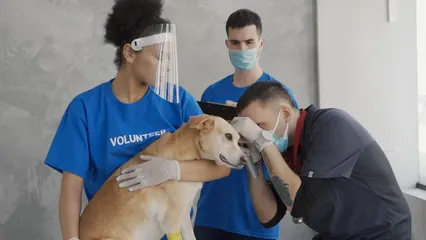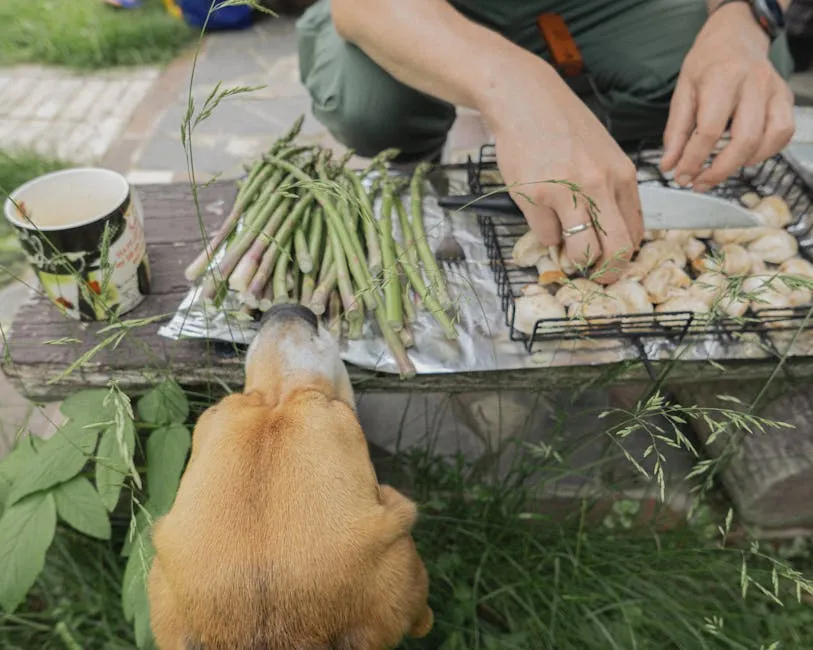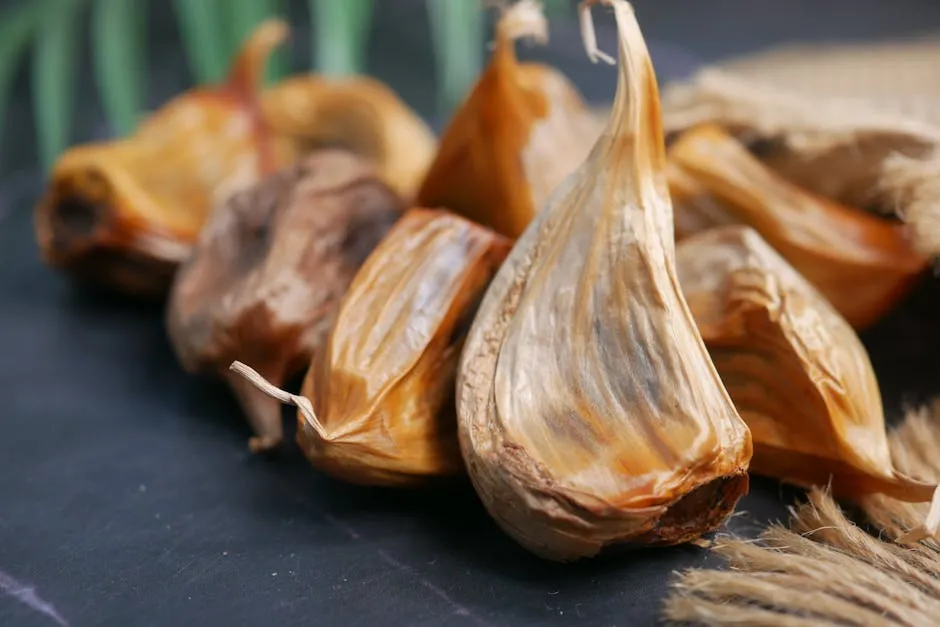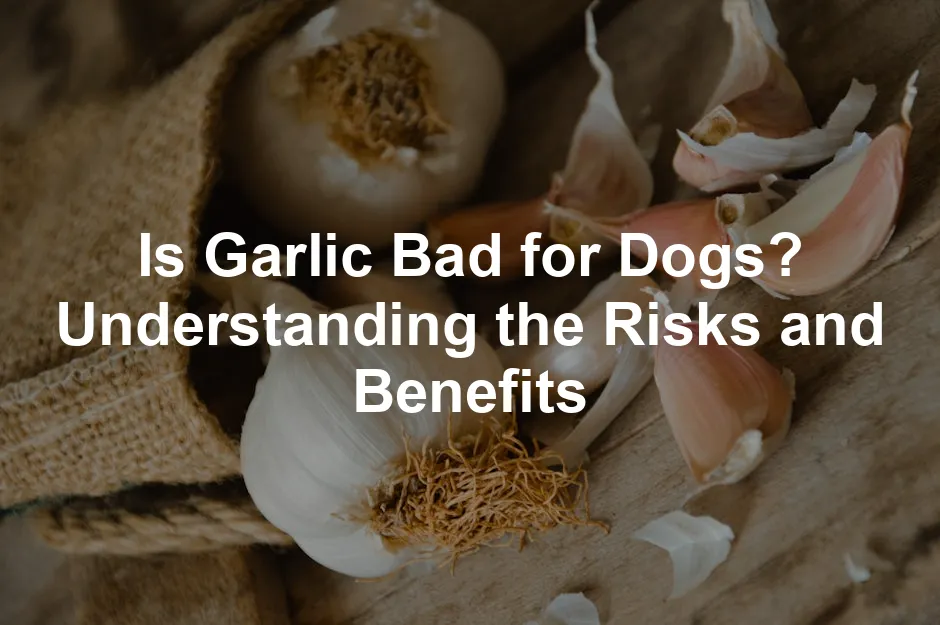Introduction
Garlic is a popular ingredient in many kitchens. It adds flavor and boasts health benefits for humans. But what about our furry friends? The safety of garlic for dogs sparks debate among pet owners. Some swear by its health perks, while others warn against its risks. This article aims to clarify whether garlic is bad for dogs, its possible advantages, and essential safety tips.
Speaking of health benefits, if you’re looking to provide your pup with a solid foundation for their wellbeing, grab a copy of Dog Health and Nutrition: The Complete Guide. This book contains everything you need to know about keeping your dog healthy and happy!

Summary and Overview
Garlic belongs to the allium family, which includes onions and chives. Many misconceptions surround its use in dog diets. The primary concern is garlic’s potential toxicity. This stems from its thiosulfate content, which can harm dogs. Experts have differing views on garlic’s safety, with some advocating for its benefits. In this article, we will cover the potential benefits, risks, and safe practices for garlic consumption in dogs.
Now, if you’re keen on whipping up some healthy meals for your canine companion, check out the Natural Dog Food Cookbook: 100 Recipes for Healthy Homemade Dog Food. It’s a tail-wagging way to ensure your dog gets the nutrition they deserve without any garlic drama!

Can Dogs Eat Garlic?
Veterinarians generally advise caution when it comes to garlic. While small amounts may not be harmful, excessive consumption can lead to toxicity. The presence of thiosulfate in garlic is the culprit. This compound can damage red blood cells in dogs, leading to serious health issues.
Historically, some dog owners have included garlic in their pets’ diets. However, it’s essential to differentiate between garlic and other alliums, like onions, which are more toxic. The consensus remains that while garlic can have health benefits in moderation, it poses risks that pet owners should carefully consider.
For more information on the nutritional needs of your dog, check out our dog nutrition guide.
Garlic Toxicity in Dogs
Garlic toxicity refers to the harmful effects garlic can have on dogs. The main culprit is thiosulfate, a compound found in garlic. This substance can damage red blood cells, leading to serious health issues. When a dog consumes garlic, thiosulfate can cause oxidative damage, making it harder for red blood cells to carry oxygen.
Symptoms of garlic poisoning can include lethargy, vomiting, and abdominal pain. You might also notice signs like pale gums or dark urine. These symptoms can arise a few days after ingestion, making it crucial to monitor your pet closely.
How much garlic is dangerous? Research shows that about 15 to 30 grams of garlic per kilogram of body weight can be toxic. For context, a medium-sized clove typically weighs between 3 and 7 grams. This means a small dog would need to consume a significant amount to reach harmful levels.
Statistics suggest that garlic poisoning in dogs is not extremely common, but it can occur. A few cases have been reported each year, emphasizing the need for caution. Always be vigilant about what your dog eats, especially with foods containing garlic.

How Much Garlic is Safe for Dogs?
Determining safe garlic amounts can be tricky. The amount of garlic considered safe varies based on your dog’s weight. Generally, for dogs weighing 10-15 pounds, half a clove is safe. Dogs in the 20-40 pound range can handle one clove. Larger dogs may tolerate two or more cloves, depending on their weight.
Individual sensitivity also plays a role. Some dogs may react negatively to even small amounts of garlic. Factors such as breed, age, and health conditions can affect tolerance. For example, Japanese breeds like Shiba Inus and Akitas may be more sensitive to garlic.
It’s also worth noting that small amounts of garlic might offer some benefits. Garlic can act as a natural pest repellent and may support the immune system. However, moderation is key.
A handy reference table can help you determine safe garlic amounts for your dog. Remember to consult your vet if you’re unsure about your dog’s specific needs or health conditions.

Benefits of Garlic for Dogs
When given in moderation, garlic can provide potential health benefits for dogs. Garlic is rich in vitamins and sulfur compounds, which can boost the immune system. It may also help to repel pests like fleas and ticks.
Many pet owners have found that incorporating small amounts of garlic into their dog’s diet can enhance overall health. However, it’s essential to monitor your dog for any adverse reactions. Always consult with your veterinarian before introducing garlic into your dog’s diet, especially if your pet has pre-existing health conditions.
In conclusion, garlic can be both harmful and beneficial for dogs. Understanding the risks, knowing safe amounts, and recognizing potential benefits can help you make informed decisions for your furry friend.

Alternatives to Garlic for Dogs
Garlic may not be the best option for our dogs. Luckily, there are plenty of safe and healthy alternatives to spice up their meals. Let’s explore some dog-friendly options that can enhance flavor without the risks associated with garlic.
Dog-Safe Herbs and Supplements
Consider using herbs like parsley, basil, and rosemary. These herbs are not only safe but can also add a burst of flavor to your dog’s food. They may even offer some health benefits! For instance, parsley is known for freshening breath and supporting kidney health. You can find high-quality Parsley Flakes on Amazon to sprinkle on their meals!
You might also want to try turmeric. This bright yellow spice can help reduce inflammation and support joint health. It’s a great addition to your dog’s diet when used in moderation. Get your hands on Turmeric Curcumin with BioPerine for extra joint support!

When introducing any new food or supplement, it’s crucial to consult your veterinarian. They can help you determine what’s best for your dog’s specific needs and health conditions.
Natural Remedies for Flea and Tick Prevention
If you’re looking to keep fleas and ticks at bay, consider natural remedies. Diatomaceous earth is a popular choice. It works by dehydrating pests, making it an effective option for flea control. You can grab a bag of Diatomaceous Earth Food Grade, 5 lb to keep those pesky critters away!
Another option is using apple cider vinegar. Many pet owners swear by its ability to repel insects. Just mix a little with water and spray it on your dog’s coat, avoiding the eyes. You can find a good quality Apple Cider Vinegar with Mother, 16 oz on Amazon!

Always check with your vet before trying new remedies, especially if your dog has any underlying health issues. Keeping your dog safe and healthy should always be the top priority!
Treating Garlic Toxicity in Dogs
If your dog consumes garlic, swift action is vital. Garlic can be harmful, so getting immediate veterinary attention is essential. The quicker the response, the better the chances of a positive outcome for your furry friend.
Veterinarians may recommend several treatments for garlic toxicity. One common method is inducing vomiting. This helps remove the garlic from your dog’s system before it can cause significant damage. Your vet might also use activated charcoal to absorb any remaining toxins in the stomach. Having a Pet First Aid Kit at home can be a lifesaver!
In more severe cases, supportive care is often necessary. This might include administering IV fluids to maintain hydration. Monitoring your dog’s vital signs will also be a priority. If anemia or other serious symptoms develop, blood transfusions might be required.
Remember, the earlier you act, the better the outcome. Always consult your veterinarian if you suspect garlic ingestion. They can provide guidance on the best course of action to keep your dog safe and healthy.

Conclusion
Garlic can pose risks for dogs, especially in large amounts. It’s crucial to prioritize moderation and consult your vet when introducing new foods. Staying informed about safe food options for your pets ensures their well-being and happiness. For a comprehensive resource on dog health, consider checking out The Complete Guide to Dog Health: Everything You Need to Know.

FAQs
Can small amounts of garlic hurt my dog?
Opinions vary on small amounts of garlic. While some experts claim it’s safe, others advise caution. Individual tolerance varies widely among dogs.
What should I do if my dog eats garlic?
First, assess how much garlic was consumed. Contact your vet for advice. They may guide you on inducing vomiting or bringing your dog in for treatment.
Are there any breeds more sensitive to garlic?
Some dog breeds can be more sensitive to garlic than others. Japanese breeds, including Shiba Inus and Akitas, are particularly at risk. They may experience adverse reactions to garlic even in small amounts. Additionally, dogs with pre-existing health conditions may also be more vulnerable. Always consult your vet if you have concerns about your dog’s sensitivity to garlic.
Can I give my dog garlic supplements?
Garlic supplements for dogs are a topic of debate. Some pet owners use them for potential health benefits, like flea prevention. However, the safety and effectiveness of these supplements remain unclear. Not all garlic supplements are created equally. Some may contain harmful levels of thiosulfate. It’s crucial to consult your veterinarian before introducing garlic supplements into your dog’s diet.
What are the signs of garlic poisoning in dogs?
If a dog consumes too much garlic, symptoms may appear. Common signs include lethargy, vomiting, and abdominal pain. You might notice pale gums or dark urine as well. Other symptoms can include increased heart rate and weakness. It’s essential to monitor your dog closely after any garlic exposure. If you see these symptoms, contact your vet immediately for guidance.
Is cooked garlic safe for dogs?
Cooking garlic does not make it safe for dogs. In fact, cooked garlic still contains thiosulfate, which is toxic to dogs. While some people believe cooking reduces its harmful effects, that’s not the case. It’s best to avoid giving your dog any form of garlic, cooked or raw, to ensure their safety.
Can I feed my dog garlic bread?
Garlic bread should be avoided for dogs. Even small amounts of garlic in bread can be harmful. Additionally, garlic bread often contains butter, oil, and salt, which can upset your dog’s stomach. These ingredients can lead to gastrointestinal issues and other health problems. Instead, stick to dog-safe treats to keep your furry friend healthy.
Please let us know what you think about our content by leaving a comment down below!
Thank you for reading till here 🙂 And don’t forget, if you’re looking to pamper your pet, check out Dog Bed for Comfort for a cozy snooze!
All images from Pexels





